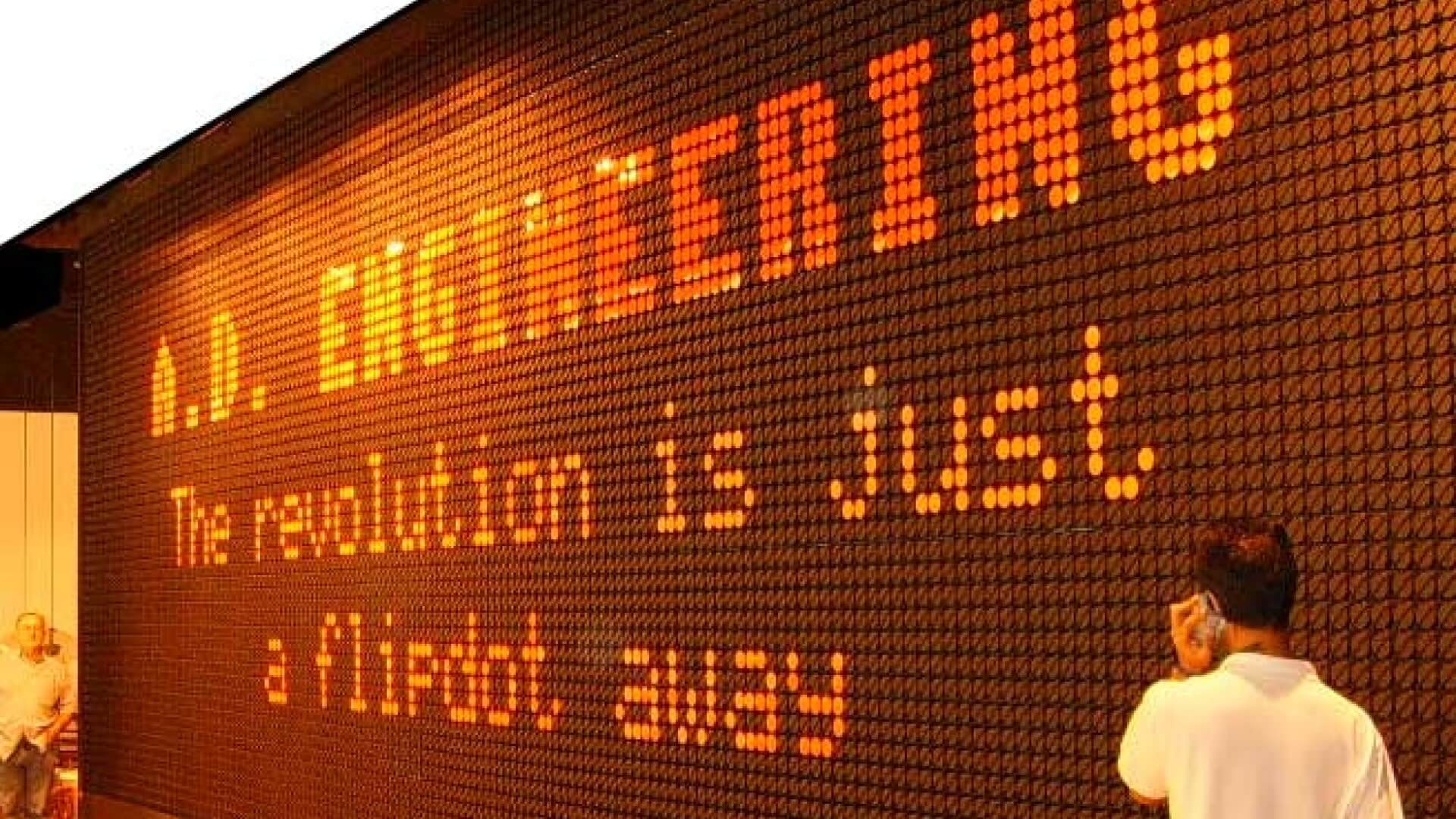
May 19 2023
5 min read


Apr
“Electronic signage” and “digital signage” are often used interchangeably. But are the two indeed the same?
While both involve using screens powered by technology to convey information, there are notable differences between the two.
In this blog, we explore the nuances of electronic signage and understand why the smallest of characteristic distinctions matter in today’s visual communication world. Let’s dive in!
Electronic signage refer to any display technology that uses electronic screens such as LED, LCD, or plasma screens, to display content. Digital signage is a type of electronic signage.
The most common examples of screens used for signage include electronic billboards. These are used for a variety of purposes, such as advertisement and promotion, point-to-point sales, wayfinding, virtual tours, etc.
With the ability to generate highly engaging content, electronic signage is up and trending in places attracting large footfall, such as commercial establishments like shopping malls, stadiums, and transportation systems, among other settings.
While digital signage is a type of electronic signage, not all electronic signages are digital signage. The following are some distinctive features:
Regarding screen technology, electronic signs differ from digital signage in numerous ways. Electronic signage displays can be found in various sizes, resolutions, durability, and pixel quality, but they are primarily suitable for displaying static content.
Examples of electronic signage displays that are not digital include:
projection displays
flip-disc displays
e-paper displays
holographic displays, etc.

On the other hand, digital signage typically uses more advanced technologies, including OLED, LED, 4K, 8K, and so on. These screens have much better visual output compared to other electronic signages.
Digital displays can also run a wide range of high-res graphics like animations, GIFs, videos, and interactive media.
A key difference between electronic signage and digital signage lies in the content management. Other electronic signages are managed locally, meaning the content must be stored on the device itself, such as via a USB drive. Thus, the admin has to upload the media manually by physically interacting with the system.
On the other hand, computerized signage or digital signage technology typically uses a centralized Content Management System (CMS) that allows for remote and real-time management and scheduling of media on the screens.
In addition, a CMS provides advanced benefits like content apps, signage analytics, and integration capabilities. That means there is computing power available for admins to track the performance of their signage campaigns, such as the number of viewers, engagement rates, screen uptime, downtime, etc.
Further, integrating digital signage software or the CMS enables the signage admin to syndicate content from any third-party database. For example, a business can show real-time information on leads, customer data, sales performance metrics, etc., on its office TVs by integrating the digital signage CMS with its CRM software.
In terms of content interactivity, digital signage generally offers more options than other electronic signage.
One of the key advantages of the former is its ability to run interactive multimedia content on the touchscreen or touchless displays. Modern interactive digital screens, such as McDonald’s self-ordering kiosks or facial recognition-led check-in displays at airports, are examples of digital signage.
While other forms of electronic displays can also be made interactive up to a certain point using physical buttons or sensors to trigger specific content, the output will be way too sluggish and quaint compared to their digital counterparts.
Electronic signboards are generally less expensive than automated ones. The reason is that electronic signage requires less hardware and software to operate than anything with an automatic and real-time updates feature. However, it’s important to note that the cost of digital signage has decreased significantly in recent years as the affordability of technology is at a new high! A variety of signage solutions are available to cater for the budgets and specifications of businesses of all sizes, allowing them to make the most of available upgrades.
Digital signage can be programmed to display different content based on factors such as time of day, location, and audience demographics, allowing businesses to deliver targeted messages to specific audiences.
For example, digital signs can offer tailored CX (customer experience) in a retail store by displaying personalized product recommendations based on a customer’s purchase history.
Such advanced solutions to complex business problems are impossible to achieve with other electronic signage systems.
Digital signage offers greater scalability compared to electronic signage. This means that businesses can easily scale up or down their digital signage network to fit their needs.
Suppose a cafe wants to open three new outlets in three different cities. Instead of paper menus, it intends to use a network of displays to show its food offerings in the three outlets. The cafe staff could manage and update the screens using digital signage software from a central remote location. With just a few clicks, they can update the menu instantly.
Now imagine the same thing using electronic signage instead of digital signage. In this case, due to the absence of any computing abilities, all the electronic displays in all three cafe outlets must be manually (and physically) updated individually. This can become a significant roadblock in scaling the business, eventually leading to a switch from electronic signage to digital signage.
Signage has evolved- from simple scrolling text displays to multimedia visuals on 3D billboards. The advent of software solutions has enabled us to move on from the primitive forms of static electronic signages to modern and highly-efficient digital systems.
Are you looking for a digital signage software solution for your business? Pickcel can be the perfect fit for you. Talk to our sales.
Take complete control of what you show on your digital signage & how you show it.
Start Free Trial Schedule My Demo
May 19 2023
5 min read

May 16 2023
8 min read

May 12 2023
9 min read

Apr 28 2023
14 min read